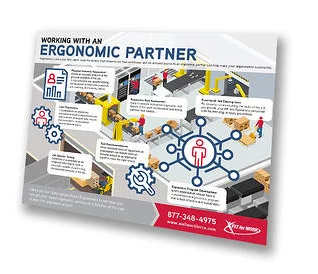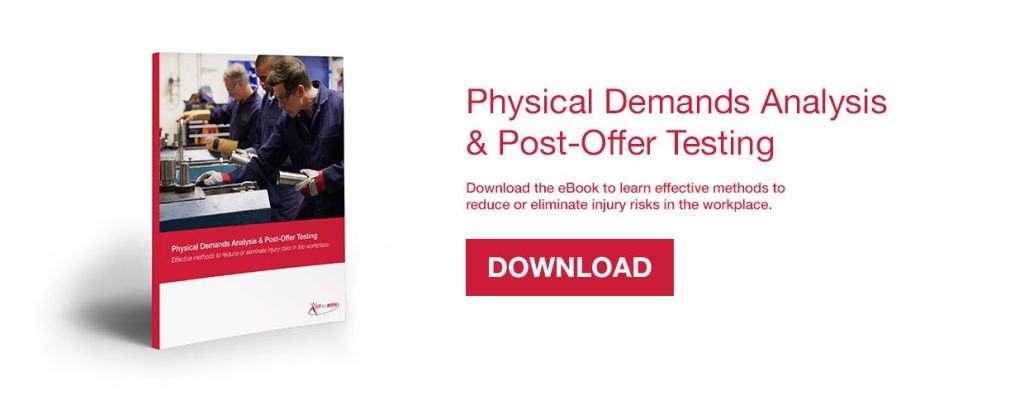Repetitive tasks are often associated with manufacturing environments. However, it is important that repetition, as an ergonomic risk factor, is not overlooked in the non-manufacturing environment. Repetitive tasks can be seen in all walks of work (i.e., warehousing, retail, public utilities, construction, etc.) In our ergonomics training courses, when explaining how repetitive motion injuries happen, we draw a parallel to the “Stonecutter’s Credo” by Jacob Riis. Look at a stone cutter hammering away at his rock, perhaps a hundred times without as much as a crack showing in it. Yet at the hundred-and-first blow it will split in two, and I know it was not the last blow that did it, but all that had gone before. Was it the last blow with the hammer that split the stone? Or was it the thousands of hits with the hammer that came before that? This is the same way that repetitive motion injuries can occur. It’s not dropping your keys on the floor and bending to pick the keys up that caused your back to “lock” up. It’s all of the hundreds or thousands of times of bending throughout the previous days, weeks, months, years that led up to that moment. That is how we explain cumulative trauma. Repetition can be just as prevalent in the non-manufacturing environment as it can be in the manufacturing environment. Pair repetition with awkward postures and/or lifting/pushing/pulling and the potential and severity of injury do not just double or triple. They increase exponentially. This is one of the reasons why a strong ergonomics and early intervention program is necessary in all types of work environments in order to keep workers safe and out of the healthcare system. 
The Dangers of Repetitive Tasks in Non-Manufacturing Environments





